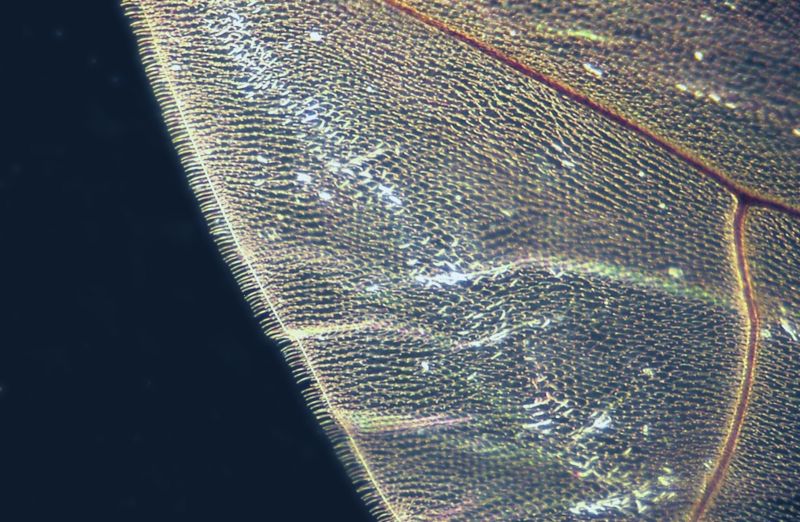Researchers from Australia and the UK are waving the idea that insect wings could be used as a model for the preparation of self-cleaning, frictionless and superhydrophobic materials. The findings of their research appear in an article published in the scientific journal International Journal of Nanomanufacturing.

Insects are amazing "nanotechnologists". The surface of the wings of many insects has developed material properties over time that scientists can only dream of obtaining. For example, some of the wings are super-hydrophobic (water-repellent) thanks to a sophisticated combination of nature's chemistry and their detailed structure at the nanometer level. This means that the wings cannot get wet - the tiniest drops are immediately rejected from them. Similarly, the wing surfaces of other insects are almost completely frictionless, so that every tiny particle of dust that could stick to the surface is swept away effortlessly.
Now, a team of researchers from several universities hopes to mimic these properties by using the surfaces of the insect's wings as templates for the preparation of plastic, or polymeric, materials with novel surface properties.
If the researchers are successful, then it will be possible to develop self-cleaning, frictionless, waterproof coatings for a wide variety of mechanical components, building materials and for other applications, including nano- and micro-electromechanical systems and "computer on a chip" devices for medical diagnosis and environmental sensing.
The team performed microscopic examinations (AFM) of the surfaces of the insect's wings to determine the forces by which the dust particles manage not to stick to the surface. These tests showed that extremely small forces (20-2 nano-newtons) are required to move dust particles away.
"Most of the surfaces had super-hydrophobic properties and not only will they reduce the effect of contact with other surfaces but will also promote self-cleaning activity to remove foreign objects from them," explains one of the researchers.
With this information in hand, the researchers next used the wing membranes as natural templates to design a polymeric surface and thereby imitate the surface structure of the insect's wing with PDMS material (short for polydimethylsiloxane), the same type of silicone gel found in breast implants.
One of the advantages of this approach lies in the fact that there is no need to pre-design the surface of the material and the researchers are able to utilize a huge variety of surface types from different insects and create materials with the properties they desire.

2 תגובות
I'm with Eyal,
This happens in many fields, either there are problems updating articles or research is not synchronized at all.. it happens in all fields, both in cancer research and in others.. as if there is a lack of focus or something, on the other hand.. this allows new technologies to be found and prevents fixation on only one way .
How many times have we heard about this direction. Why is it always talked about as if it is "for the first time"? No sharing of efforts between different groups? What, the previous groups failed their experiments? Even here in Israel there was such a group from the Weizmann Institute that I also mentioned on the previous occasion that was not long ago. They even brought a surface coated with the material to the studio and demonstrated its capability. So what's up with that??